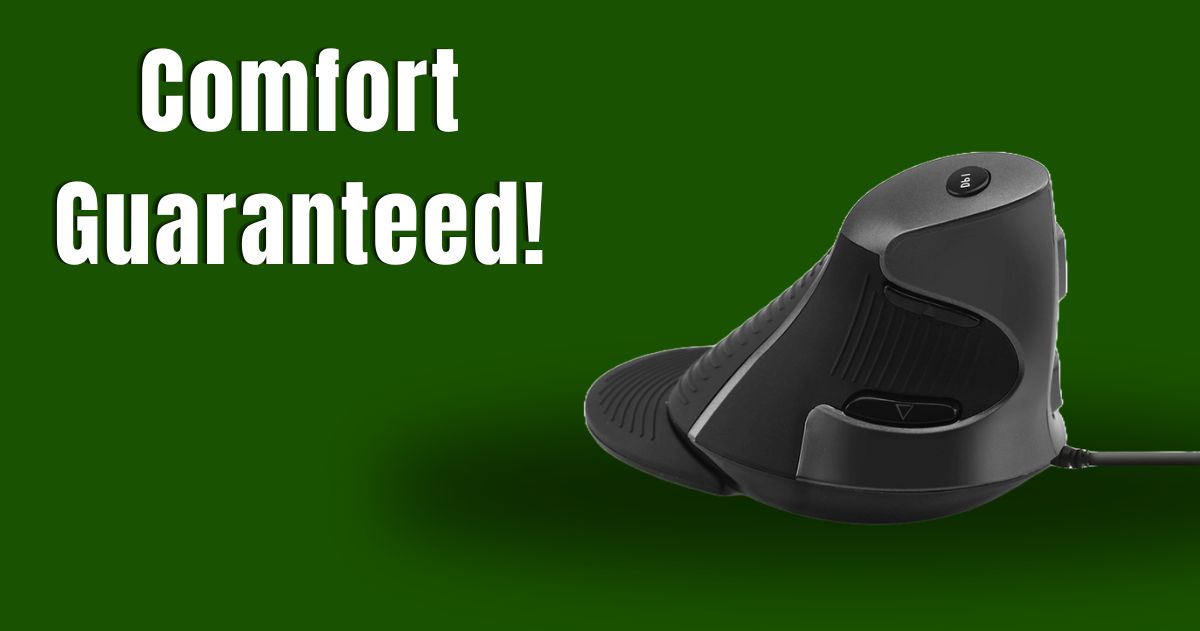Are you tired of the discomfort and strain caused by traditional computer mice? If so, you’re not alone. Many people experience wrist pain, stiffness, and even long-term injuries from using a standard mouse. But fear not! There’s a solution that can revolutionize your computing experience: vertical mice. In this article, we’ll explore five tips to upgrade your comfort and productivity with vertical mice.
Guide-us
Before we dive into the tips, let’s briefly understand what vertical mice are and why they’re becoming increasingly popular.
Vertical mice are an innovative alternative to traditional computer mice. Unlike conventional mice that force your hand into an unnatural palm-down position, vertical mice allow your hand to rest in a more natural handshake position. This ergonomic design reduces strain on your wrist and forearm muscles, promoting a healthier posture and minimizing the risk of repetitive strain injuries.
Understanding Vertical Mice
Traditional mice have been the go-to choice for decades, but their design isn’t always friendly to our bodies. The palm-down position can lead to discomfort and even chronic pain over time. Vertical mice address this issue by aligning the hand, wrist, and forearm in a more neutral position. This can alleviate strain and make long hours of computer use much more comfortable.
Ergonomic Design
One of the key features of vertical mice is their ergonomic design. They’re shaped to fit the natural contours of your hand, providing support and comfort throughout the day. Look for a mouse with a contoured shape and soft, rubberized grips to ensure maximum comfort during extended use.
Proper Hand Positioning
Using a vertical mouse correctly is essential for maximizing its ergonomic benefits. Keep your wrist straight and your hand relaxed, avoiding any unnecessary tension. Allow your fingers to move freely, lightly resting your palm on the mouse. This natural hand position can reduce fatigue and discomfort, even during long work sessions.
Adjustable DPI Settings
DPI (dots per inch) refers to the sensitivity of your mouse cursor. Many vertical mice come with adjustable DPI settings, allowing you to customize the sensitivity to your liking. Lower DPI settings require more physical movement but can provide greater precision, while higher DPI settings allow for quicker cursor movement with less effort.
Customizable Buttons
Customizable buttons are another useful feature of vertical mice. They allow you to assign different functions to various buttons, such as page navigation, copy and paste, or even multimedia controls. This can streamline your workflow and reduce the need to reach for your keyboard, enhancing both comfort and productivity.
Regular Breaks
Even with the most ergonomic mouse, it’s important to take regular breaks to prevent muscle fatigue and strain. Every hour or so, take a short break to stretch your wrists, hands, and fingers. This simple practice can improve circulation and reduce the risk of repetitive strain injuries in the long run.
Stretching Exercises
In addition to taking regular breaks, incorporating stretching exercises into your routine can further alleviate tension and promote flexibility. Simple exercises like wrist circles, finger stretches, and forearm stretches can help relax tight muscles and improve overall comfort.
Posture Awareness
Using a vertical mouse is just one part of maintaining a healthy computing environment. Pay attention to your posture while sitting at your desk. Sit up straight with your feet flat on the floor and your monitor at eye level. This will help reduce strain on your neck, shoulders, and back.
Desk Ergonomics
Lastly, consider your desk setup. Make sure your desk is at an appropriate height so that your arms can rest comfortably on the surface while using your mouse. Invest in an ergonomic keyboard and mouse pad to further enhance your comfort and reduce strain.
Join us
Ready to make the switch to a vertical mouse? Let’s answer some common questions you might have.
FAQs
A vertical mouse is a type of computer mouse designed to fit the natural handshake position of the hand, reducing strain and promoting a more ergonomic posture.
Traditional mice force the hand into a palm-down position, while vertical mice allow the hand to rest in a more natural, upright position.
Vertical mice are suitable for most people, especially those who experience discomfort or strain from using traditional mice. However, it may take some time to adjust to the new hand position.
The time it takes to adjust to a vertical mouse varies from person to person. Some people may feel comfortable right away, while others may take a few days or weeks to fully adapt.
Some users may find vertical mice slightly bulkier than traditional mice, which can take some getting used to. Additionally, not all vertical mice are compatible with all hand sizes, so it’s essential to find one that fits comfortably.


